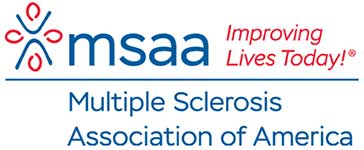From a neurological perspective, speech abnormalities may be due to a disturbance of primary language function (aphasia) or due to mechanical disturbances of word formation (dysarthria). With aphasia, an individual may partially or fully lose the ability to communicate verbally or with written words, either temporarily or permanently, and this may be related to a loss of memory. With dysarthria, an individual will have difficulties speaking due to reduced control of muscles, often a result of nerve damage.
Speech disturbances in MS typically result from dysarthria, with true aphasia to be uncommon in my experience. Disturbances of the nerve supply that weaken the muscles of the lower face, lips, tongue, and throat can result in dysarthria. These are due to lesions in the brainstem, a part of the nervous system between the brain and cervical spinal cord.
Many individuals with MS also complain of word-finding difficulties due to the longer processing speed, which often occurs in multiple sclerosis. This isn’t a true aphasia, but rather a delay in the recall of the necessary word.
More commonly, multiple small lesions in either of the two large lobes of the brain, known as the cerebral hemisphere, result in poor motor control and coordination of these muscles. Slurring and slowness of speech, with altered pronunciation, characterize dysarthria.
“Scanning speech,” characterized by long pauses between syllables and words with loss of melody in speech production, is another type of dysarthria. The term “explosive speech” is sometimes used to describe intermittent episodes of loud, rapid speech production. These dysarthrias are attributed to lesions in the cerebellum, located in the lower-back region of the brain. Coordination between the muscles of articulation and exhalation, necessary for volume control, appears faulty in these dysarthrias. Speech pathologists are usually consulted to help manage these problems by training and coaching the patients to compensate for the deficits.
